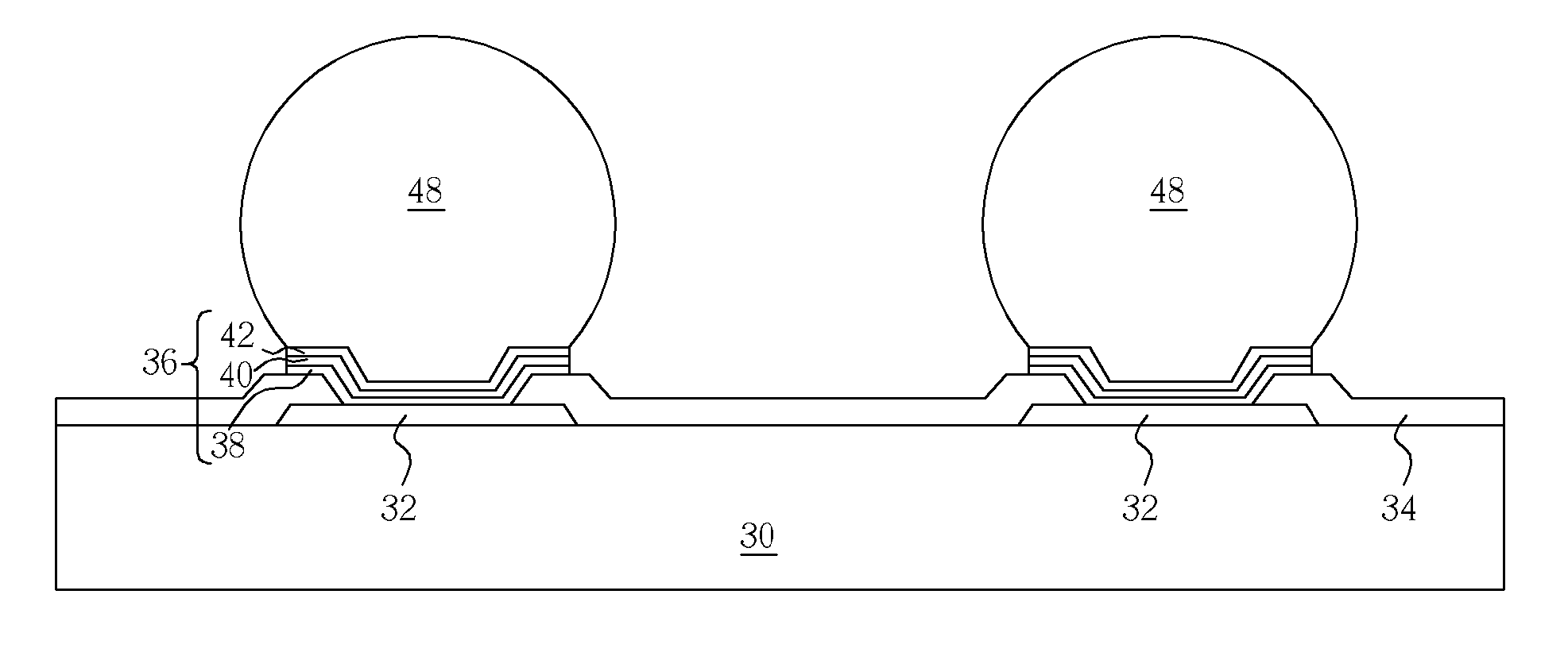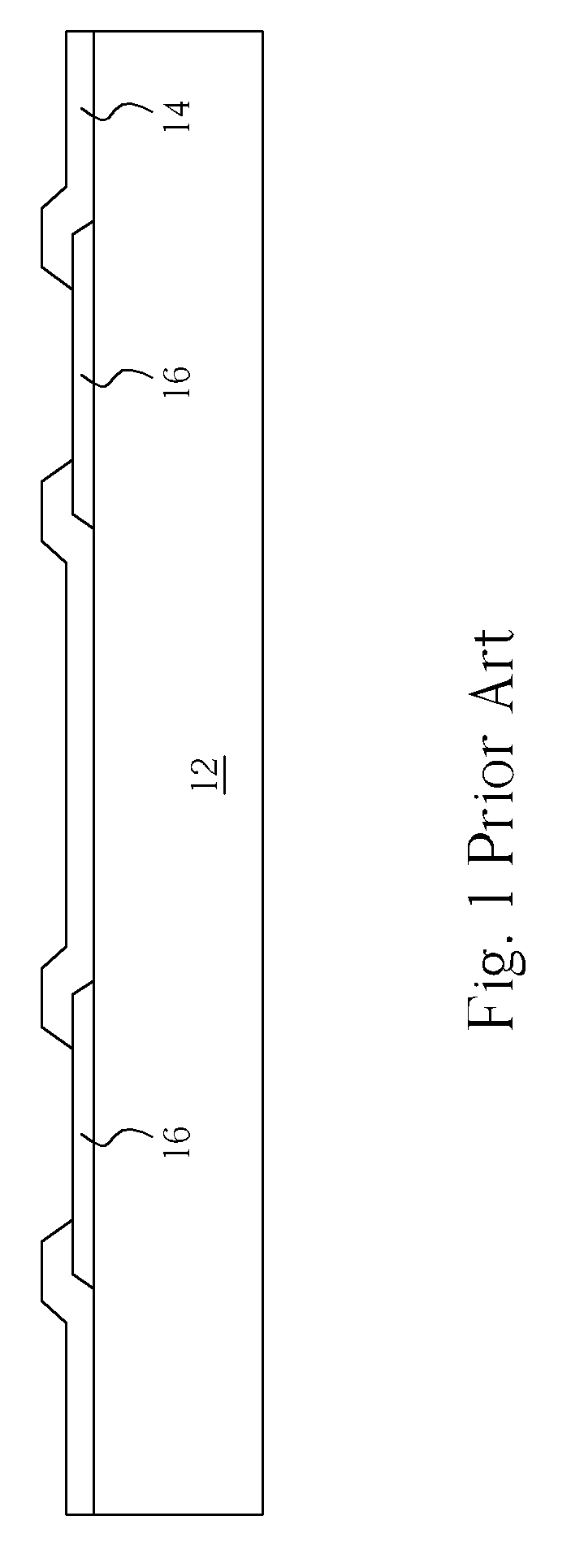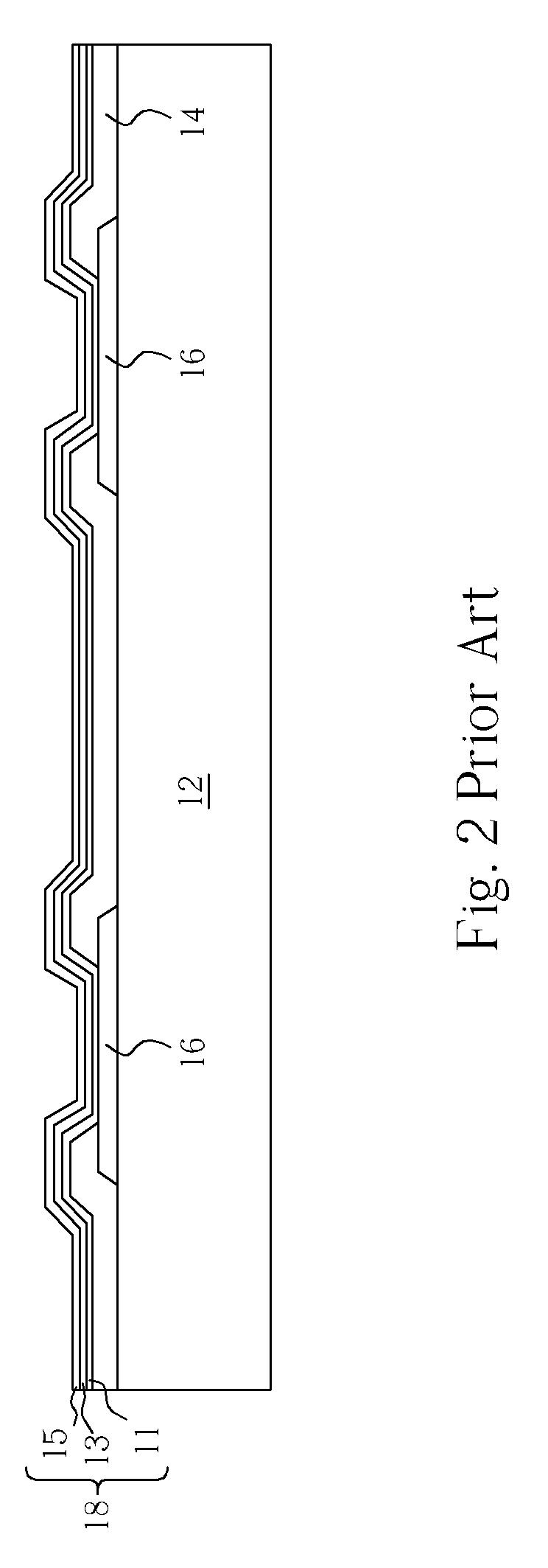Etchant and method for forming bumps
a technology of etching and bumps, applied in the field of etching bumps, can solve the problems of reducing the size of the package structure of the flip-chip packaging process, corroding the tin solder, damage to the adhesive layer, etc., and achieves the effect of ensuring the etching selectivity and the metallurgy layer under the bump
- Summary
- Abstract
- Description
- Claims
- Application Information
AI Technical Summary
Benefits of technology
Problems solved by technology
Method used
Image
Examples
Embodiment Construction
[0016] Certain terms are used throughout the following description and claims to refer to particular system components. As one skilled in the art will appreciate, consumer electronic equipment manufacturers may refer to a component by different names. This document does not intend to distinguish between components that differ in name but not function. In the following discussion and in the claims, the terms “including ”and “comprising ”are used in an open-ended fashion, and thus should be interpreted to mean “including, but not limited to . . . ” The terms “couple ”and “couples” are intended to mean either an indirect or a direct electrical connection. Thus, if a first device couples to a second device, that connection may be through a direct electrical connection, or through an indirect electrical connection via other devices and connections.
[0017] Please refer to FIG. 7 through FIG. 12. FIG. 7 through FIG. 12 are perspective diagrams showing a method of forming a bump 48 accordin...
PUM
 Login to View More
Login to View More Abstract
Description
Claims
Application Information
 Login to View More
Login to View More - R&D
- Intellectual Property
- Life Sciences
- Materials
- Tech Scout
- Unparalleled Data Quality
- Higher Quality Content
- 60% Fewer Hallucinations
Browse by: Latest US Patents, China's latest patents, Technical Efficacy Thesaurus, Application Domain, Technology Topic, Popular Technical Reports.
© 2025 PatSnap. All rights reserved.Legal|Privacy policy|Modern Slavery Act Transparency Statement|Sitemap|About US| Contact US: help@patsnap.com



